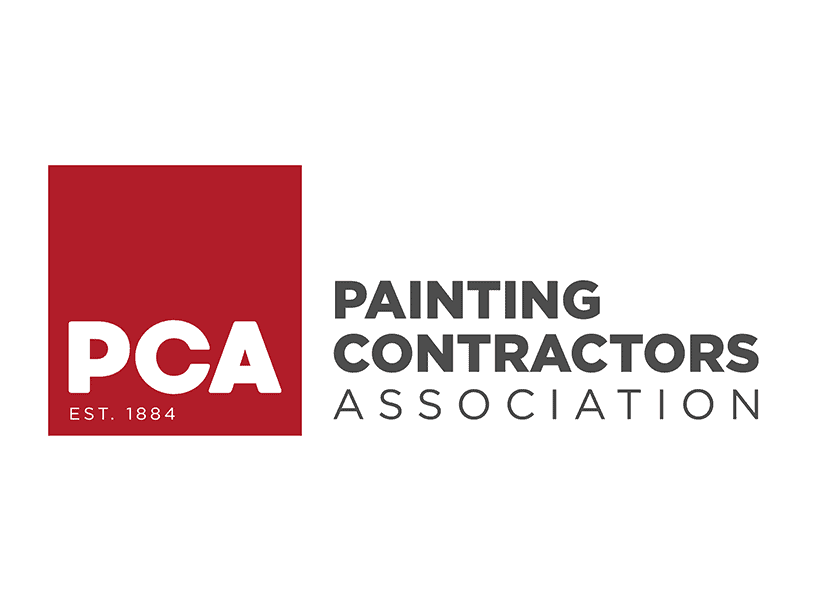
21 Nov Ceiling, Trim, and Walls—Layered Looks by House Painters in Vienna, VA
If you’ve ever stared at a room and felt something was “off,” the culprit is often how the ceiling, trim, and walls relate to each other. Great interiors aren’t just about a nice wall color—they’re about layering surfaces so they work together. Here’s how professional House Painters in Vienna, VA, build a cohesive look from the top down, with practical guidance you can use on your next project.
To talk through options or get a tailored estimate, connect with our team of House Painters in Vienna, VA.
Why layering matters (and how it instantly upgrades any room)
Layering creates visual order. When the ceiling, trim, and walls have clear roles—each with its own color, sheen, and profile—your eye reads the space effortlessly. The room feels brighter, cleaner, and more upscale, even without major renovations. The bonus: smart layering protects surfaces from daily wear, which helps paint jobs look fresh for longer.
Start at the top: ceilings set the mood.
Ceilings are the quiet backdrop that affects everything beneath them. In Vienna homes—whether contemporary builds or classic colonials—pros typically approach ceilings with these goals:
- Diffuse light so the room feels soft and even
- Hide small imperfections common on a large overhead plane.s
- Support the room’s palette without grabbing attention.
Color choices that work
- Crisp, bright white makes spaces feel open and airy. It’s a trusted choice in living rooms, kitchens, and hallways where you want maximum light bounce.
- Tinted whites (think a whisper of the wall color) create a restful, boutique-hotel vibe in bedrooms. A 10–20% tint of the wall color can be enough to tie everything together.
- Deliberate contrast—such as a pale blue or soft taupe—adds character in dining rooms, studies, or powder baths. This works best with strong trim profiles and deliberate wall colors.
Sheen selection
- Flat or ultra-flat is the standard for most ceilings because it masks texture and minimizes glare from recessed lights.
- Matte can be used when you want a touch more washability without creating sheen hotspots.
Pro tip for Vienna lighting
Rooms with mixed light sources (can lights plus windows) benefit from ultra-flat finishes that reduce highlights on patched areas or seams. That’s especially helpful in open-concept spaces that run front-to-back across the house.
Trim is your frame—make it precise and durable.
Trim guides the eye and protects edges. Baseboards, casings, crown, chair rail, and wainscoting do heavy lifting. When finished correctly, they sharpen lines and make wall colors look intentional.
Go-to trim colors
- Clean white (in cool, neutral, or slightly warm tones) keeps rooms fresh and pairs with nearly any wall color.
- Soft putty or greige adds sophistication in historic or traditional spaces.
- Deep contrast—charcoal, navy, or espresso—turns trim into a design feature, especially around built-ins or statement doors.
Sheen for trim
- Semi-gloss remains the standard for its durability and easy cleaning. It highlights crisp profiles on the crown and baseboards.
- Satin is a refined alternative when you want subtler reflection but still need scuff resistance in high-traffic areas.
Prep is everything
- Gap-free caulking along trim-to-wall joints creates that coveted “finished” look.
- Sanding between coats levels brush marks on doors and baseboards.
- Dedicated trim primers promote adhesion, block tannins on stained wood, and help achieve a smoother final coat.
Walls connect the story—tone, saturation, and sheen
Walls cover the most surface area, so their color temperature and sheen control the overall vibe.
Color strategy
- Light neutrals (soft beige, gentle greige, warm whites) amplify daylight and keep spaces flexible for décor updates.
- Calm mid-tones (sage, dusty blue, mushroom) add character without overwhelming.
- Purposeful accent walls work best when they reinforce architecture—behind a headboard, around a fireplace, or framing built-ins.
Sheen for walls
- Matte/flat offers a modern, low-glare look for low-traffic, low-moisture rooms.
- Eggshell is a favorite balance for family spaces—more washable without looking shiny.
- Satin suits busy hallways, kids’ rooms, and kitchens where frequent wipe-downs are expected.
Coordination tip
When trim is semi-gloss white, try an eggshell wall in a warm neutral and a flat ceiling in a close white. The subtle sheen steps (flat → eggshell → semi-gloss) create pleasing depth without visual noise.
The right order of operations (how pros paint for flawless edges)
Sequence matters. Here’s the typical flow House Painters in Vienna, VA rely on for efficient, crisp results:
- Prep everything: cover floors and furniture, remove/label hardware, repair drywall, caulk gaps, spot-prime repairs.
- Ceilings first: roll the broad fields, then cut edges. It doesn’t matter if ceiling paint laps onto walls—you’ll fix it later.
- Trim next: sand, prime if needed, then finish. Let the trim dry fully so it resists scuffs during wall work.
- Walls last: cut along the finished trim, then roll walls in tight “W” patterns for even coverage.
- Final touch-ups: inspect under multiple light sources and at different times of day.
This order keeps edges clean, limits touch-ups, and shortens total project time.
Color pairings that always look pulled together
Below are pairings (described, not brand-specific) that adapt well to Vienna homes:
- Airy classic: Ceiling—bright neutral white (flat). Trim—neutral white (semi-gloss). Walls—soft greige (eggshell).
- Transitional calm: Ceiling—tinted wall color at 80% strength (flat). Trim—warm white (satin or semi-gloss). Walls—muted sage (eggshell).
- Elevated contrast: Ceiling—crisp white (flat). Trim—deep charcoal or navy (semi-gloss). Walls—light warm white (matte/eggshell).
- Cozy modern: Ceiling—soft ivory (flat). Trim—putty/stone (satin). Walls—mushroom taupe (eggshell).
Using architectural cues to guide the palette
Vienna’s neighborhood mix—brick colonials, split-levels, and newer builds—offers useful clues:
- Colonials take well to contrast: bright white trim frames mid-tone walls, and give stairwells definition.
- Split-levels benefit from continuity: a single wall color across the main floors, with subtle ceiling tints, creates flow.
- New builds with generous natural light can sustain bolder contrasts—dark interior doors, for example—without closing in the space.
Sheen transitions made simple
Think of sheen like texture. Step up gradually:
- Ceiling (flat) → keeps the overhead quiet
- Walls (eggshell/matte) → adds faint depth.
- Trim (satin/semi-gloss) → introduces crisp, durable highlights
.
This tiered approach reads “finished” to the eye and helps each layer wear appropriately.
Prep details that separate a good finish from a great one
Drywall and patching
Feather repairs wider than you think—work in 8–12″ bands so patches disappear once light rakes across walls.
Caulking strategy
Use paintable caulk at trim-to-wall joints and along the crown. Tool it neatly with a damp finger or caulk tool. Keep lines consistent so paint bridges cleanly.
Sanding and dust control
Sanding between coats on trim and doors is the difference between ordinary and furniture-like smoothness. Vacuum and tack-cloth to keep dust from telegraphing through glossy finishes.
Priming smart
- Raw wood or stained trim needs stain-blocking primer.
- Patched areas on walls are spot-primed to ensure a uniform final sheen.
- When shifting from dark to light wall colors, consider a tinted primer for faster coverage.
Room-by-room layering playbook
Living rooms and family rooms
Aim for adaptable, crowd-friendly finishes. Use eggshell on walls to resist fingerprints, flat on ceilings for a soft glow, and semi-gloss on trim for easy wipe-downs. If you have built-ins, painting the backs a shade deeper than the walls adds depth without competing with décor.
Kitchens and breakfast nooks
Humid zones and frequent splashes call for satin on walls and semi-gloss on trim. If cabinetry stays as-is, coordinate the trim color to the cabinet tone so the room feels intentional. A pale, cool ceiling helps offset warm task lighting.
Dining rooms
A gently contrasting ceiling (light blue-gray or pearl) elevates formal meals. Chair rail or wainscoting looks best with a subtle sheen bump—satin on the millwork, eggshell above.
Bedrooms
Comfort first. Matte or flat walls create a tranquil envelope; pair with a flat ceiling and satin trim for a soft edge. Consider toning the ceiling with 10–20% of the wall color for a cocooning effect.
Bathrooms
Use moisture-tolerant paints. Satin walls and semi-gloss trim stand up to steam. Keep ceilings flat unless condensation is extreme; in that case, a matte designed for baths can improve wipeability.
Hallways and stairs
Durability rules. Satin or durable eggshell on walls handles traffic and handrail smudges. Crisp trim brightens shadowed corners and frames wall art.
Small-space strategies that feel high-end
- Raise the ceiling visually by painting crown molding the same color as the ceiling, then contrasting the walls and baseboards.
- Soften low ceilings with a cooler ceiling white; it recedes slightly, making the room feel taller.
- Widen narrow halls by matching trim to the wall color in satin; the uniformity reduces visual breaks.
How professionals ensure color accuracy in real light
Vienna homes experience varied daylight from tree-lined streets to open lots. Pros sample in multiple spots and review in the morning, midday, and evening. Warm interior bulbs can shift colors to amber; daylight bulbs push cooler. Adjust undertones accordingly. Always test your top contenders on the actual surface—ceiling, wall, and trim—not just on a board.
Scheduling and workflow that minimize disruption
A well-planned interior project keeps your home neat and livable:
- Rooms are sequenced to maintain access to kitchens, bathrooms, and bedrooms
- Daily cleanup resets spaces so you’re not living in a work zone
- Clear communication on drying times and recoat intervals helps you plan around sleep, pets, and kids.
If you’d like this level of precision in your home, reach out to our House Painters in Vienna, VA for a walk-through and a detailed proposal.
Common mistakes to avoid
- Mixing trim sheens in the same room (it reads as a mismatch)
- Skipping ceiling updates when repainting walls—the ceiling can make a freshly painted wall look dingy
- Ignoring undertones (pairing a pink-beige wall with a blue-white trim can look jarring)
- Under-prepping shiny trim—without scuff-sanding and priming, adhesion suffers.s
- Choosing pure white everywhere—in warm-lit rooms, it can appear stark —consider a warmer or neutral white.e
When to consider carpentry tweaks before painting
Minor carpentry can dramatically impact paint results:
- Add crown or picture molding to draw eyes upward
- Replace builder-grade baseboards with taller profiles for a finished look.
- Update door casings for sharper shadow lines.
- Repair wood rot around sills or frames so paint adheres and performs as intended.d
Integrating carpentry with painting streamlines scheduling and ensures every layer fits together cleanly.
Maintenance that keeps layers looking fresh
- Dust and wipe trim periodically with a damp microfiber cloth
- Address scuffs on walls with light soap and water; for deeper marks, keep a labeled quart of touch-up paint sealed and handy.
- Inspect caulk joints annually, especially around windows and exterior walls, and refresh them when gaps appear.r
A sample layered scheme for the whole main floor
- Foyer: Walls in soft, warm greige (eggshell), white flat ceiling, semi-gloss white trim.
- Living room: Same walls for continuity; add built-in backs one shade deeper.
- Kitchen: Shift walls to satin in a complementary tone for wipeability; maintain the same trim color.
- Powder bath: Slightly deeper wall color for drama; keep trim and ceiling consistent to unify the floor.
This approach balances variety with cohesion, so each room feels connected while retaining its own personality.
Budget-smart ways to create a layered look
- Prioritize trim in high-visibility areas if you can’t tackle everything at once; crisp baseboards and casings make any wall color feel intentional.
- Refresh ceilings during a repaint—labor is already mobilized and protection is in place, so you gain an outsized impact for a modest add.
- Re-use colors strategically: one ceiling white + one trim white throughout, then rotate two or three wall colors that share undertones.
Ready to plan your space?
Whether you want a clean refresh or a bold transformation, a layered approach adds structure, durability, and style to your rooms. If you’re in the market for House Painters in Vienna, VA, our team is ready to help with color guidance, careful prep, and smooth scheduling. Start the conversation with our House Painting crew in Vienna, VA.
FAQs
1) What’s the most durable trim finish for busy households?
Semi-gloss holds up best to bumps, vacuums, and frequent cleaning. Satin works if you prefer lower shine, but semi-gloss remains the workhorse for doors, frames, and baseboards.
2) Do I have to repaint the ceiling when I change the wall color?
You don’t have to, but you’ll likely want to. A freshly painted wall can make an older ceiling look dull. Updating the ceiling at the same time ensures the whole room reads clean and consistent.
3) Which wall sheen should I choose for kids’ rooms or hallways?
Eggshell or satin. Both resist scuffs and are easy to wipe. Hallways with frequent contact often benefit from satin’s added durability.
4) How do I pick the right white for trim?
Match undertones to your walls and fixed finishes. If your space leans warm (wood floors, warm bulbs), a neutral-to-warm white avoids stark contrasts. In cooler spaces, a neutral-to-cool white can feel crisp and bright.
5) What’s the ideal painting order to avoid messy edges?
Ceilings first, trim second, walls last. Then do final touch-ups under different lighting conditions to catch any missed spots. This sequence yields cleaner cut lines and fewer re-dos.
If you’re ready to see these ideas come to life, Home Works Painting can map out a plan that fits your style, schedule, and budget.

Mike Katounas is the owner of Home Works Painting, a painting business in Northern Virginia. He has over 15 years of experience in residential interior and exterior painting, drywall installation/repair, carpentry, wallpaper removal, power washing, commercial painting, color consultation, and staining/sealing. Their service areas include Chantilly, Fairfax, Herndon, Oakton, Reston. Mike takes pride in his work, and he always follows a strict code of conduct that includes the use of quality paint, a clean workspace, and an honest, respectful approach to his customers.












Sorry, the comment form is closed at this time.